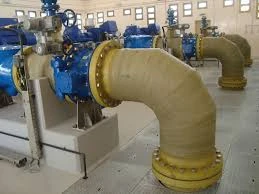
-
 Afrikaans
Afrikaans -
 Albanian
Albanian -
 Amharic
Amharic -
 Arabic
Arabic -
 Armenian
Armenian -
 Azerbaijani
Azerbaijani -
 Basque
Basque -
 Belarusian
Belarusian -
 Bengali
Bengali -
 Bosnian
Bosnian -
 Bulgarian
Bulgarian -
 Catalan
Catalan -
 Cebuano
Cebuano -
 China
China -
 China (Taiwan)
China (Taiwan) -
 Corsican
Corsican -
 Croatian
Croatian -
 Czech
Czech -
 Danish
Danish -
 Dutch
Dutch -
 English
English -
 Esperanto
Esperanto -
 Estonian
Estonian -
 Finnish
Finnish -
 French
French -
 Frisian
Frisian -
 Galician
Galician -
 Georgian
Georgian -
 German
German -
 Greek
Greek -
 Gujarati
Gujarati -
 Haitian Creole
Haitian Creole -
 hausa
hausa -
 hawaiian
hawaiian -
 Hebrew
Hebrew -
 Hindi
Hindi -
 Miao
Miao -
 Hungarian
Hungarian -
 Icelandic
Icelandic -
 igbo
igbo -
 Indonesian
Indonesian -
 irish
irish -
 Italian
Italian -
 Japanese
Japanese -
 Javanese
Javanese -
 Kannada
Kannada -
 kazakh
kazakh -
 Khmer
Khmer -
 Rwandese
Rwandese -
 Korean
Korean -
 Kurdish
Kurdish -
 Kyrgyz
Kyrgyz -
 Lao
Lao -
 Latin
Latin -
 Latvian
Latvian -
 Lithuanian
Lithuanian -
 Luxembourgish
Luxembourgish -
 Macedonian
Macedonian -
 Malgashi
Malgashi -
 Malay
Malay -
 Malayalam
Malayalam -
 Maltese
Maltese -
 Maori
Maori -
 Marathi
Marathi -
 Mongolian
Mongolian -
 Myanmar
Myanmar -
 Nepali
Nepali -
 Norwegian
Norwegian -
 Norwegian
Norwegian -
 Occitan
Occitan -
 Pashto
Pashto -
 Persian
Persian -
 Polish
Polish -
 Portuguese
Portuguese -
 Punjabi
Punjabi -
 Romanian
Romanian -
 Russian
Russian -
 Samoan
Samoan -
 Scottish Gaelic
Scottish Gaelic -
 Serbian
Serbian -
 Sesotho
Sesotho -
 Shona
Shona -
 Sindhi
Sindhi -
 Sinhala
Sinhala -
 Slovak
Slovak -
 Slovenian
Slovenian -
 Somali
Somali -
 Spanish
Spanish -
 Sundanese
Sundanese -
 Swahili
Swahili -
 Swedish
Swedish -
 Tagalog
Tagalog -
 Tajik
Tajik -
 Tamil
Tamil -
 Tatar
Tatar -
 Telugu
Telugu -
 Thai
Thai -
 Turkish
Turkish -
 Turkmen
Turkmen -
 Ukrainian
Ukrainian -
 Urdu
Urdu -
 Uighur
Uighur -
 Uzbek
Uzbek -
 Vietnamese
Vietnamese -
 Welsh
Welsh -
 Bantu
Bantu -
 Yiddish
Yiddish -
 Yoruba
Yoruba -
 Zulu
Zulu
Techniques and Strategies for Efficient Insertion of Rock Bits in Drilling Operations
Inserting Rock Bits Techniques and Strategies for Efficient Drilling
In the world of drilling, whether for oil, gas, or geothermal energy, the efficiency of the operation heavily hinges on the performance of the rock bits employed. Rock bits are crucial tools responsible for penetrating the Earth's crust, and their insertion and management can significantly impact drilling speed, cost, and overall effectiveness. Given the challenging nature of geological formations, employing sophisticated techniques and strategies for inserting rock bits is essential for optimizing drilling operations.
Understanding Rock Bits
Rock bits come in various designs, such as roller cone bits, fixed-cutter bits, and PDC (Polycrystalline Diamond Compact) bits. Each type has unique attributes tailored to specific drilling conditions. For instance, roller cone bits are ideal for soft to medium formations, while PDC bits excel in hard rock environments. Understanding the characteristics of different types of rock bits is the first step in selecting the right tool for the job.
Techniques for Inserting Rock Bits
1. Pre-Drilling Assessment Before inserting a rock bit, conducting a comprehensive geological assessment is critical. Engineers should analyze data regarding rock types, hardness, and any unique geological features. This pre-drilling phase ensures that the selected rock bit is compatible with the anticipated challenges.
2. Optimizing Bit Selection Based on the geological assessment, the next step is optimizing the type and size of the rock bit. Factors such as drilling depth, formation characteristics, and the required rate of penetration (ROP) must be considered. Choosing the right bit can drastically reduce wear and improve efficiency.
inserting rock bits techniques and strategies for efficient ...

3. Proper Alignment During insertion, ensuring that the rock bit is correctly aligned is vital. Misalignment can lead to uneven wear and decreased drilling performance. Utilizing advanced drilling technologies, such as rotary steering systems, can help maintain accurate alignment throughout the drilling process.
4. Controlled Weight on Bit (WOB) Adjusting the weight on the bit is a crucial factor in the insertion process. Too much weight can lead to bit failure, while insufficient weight may not effectively penetrate the rock. Engineers must calculate the optimal WOB to maintain a balance that maximizes ROP without compromising bit integrity.
5. Maintaining the Right Speed The rotational speed of the drilling operation can greatly affect the efficiency of the rock bit. Operators must adhere to the optimal RPM as specified for the chosen bit type. A well-calibrated speed ensures effective penetration while reducing energy consumption.
6. Monitoring Bit Performance Continuous monitoring during drilling operations is essential. Employing data analytics and real-time monitoring systems can provide insights into the rock bit’s performance. By tracking metrics such as vibration, temperature, and rate of penetration, operators can make informed adjustments to the drilling strategy, enhancing efficiency and prolonging bit life.
7. Regular Maintenance and Inspection After several drilling operations, bits should be thoroughly inspected and maintained. Regularly scheduled maintenance helps in identifying wear patterns and potential issues that may impact future operations. Utilizing reconditioning services can extend the life of rock bits, providing cost savings in the long run.
Conclusion
Inserting rock bits is a fundamental aspect of efficient drilling operations. By employing a combination of thorough pre-drilling assessments, careful bit selection, precise alignment, optimal weight adjustments, and continuous performance monitoring, drilling engineers can significantly enhance the efficiency and effectiveness of their operations. As drilling technology continues to advance, keeping abreast of the latest techniques and strategies for rock bit insertion will be essential for industries relying on subterranean resources. This proactive approach not only maximizes operational efficiency but also minimizes costs and environmental impacts throughout the drilling process.









